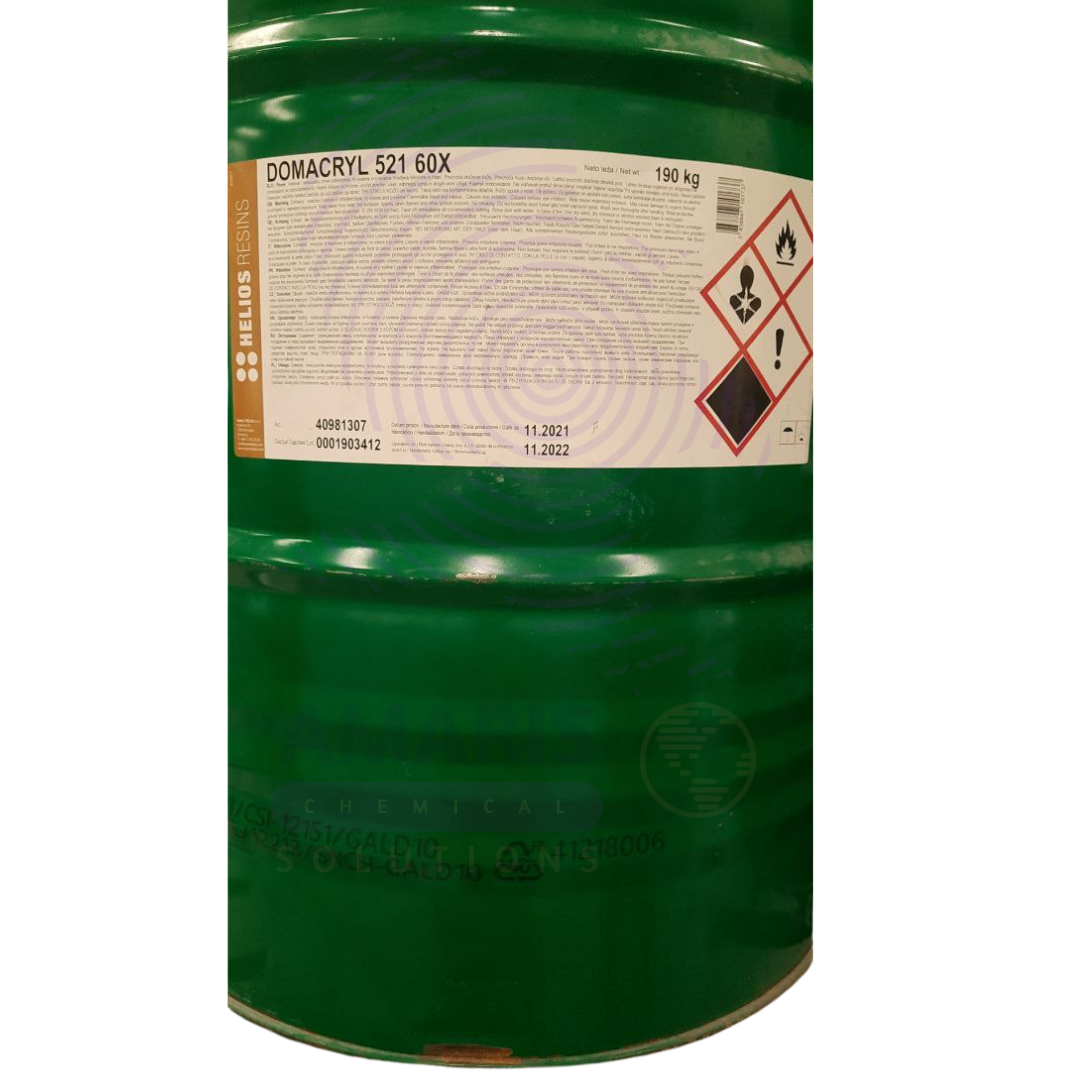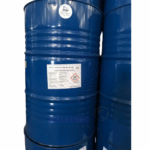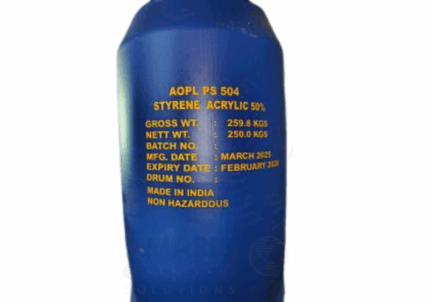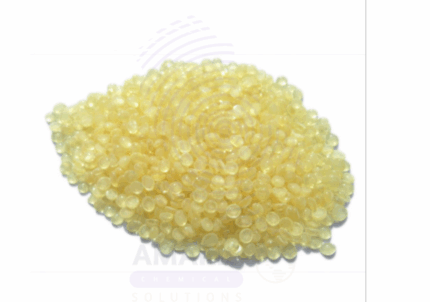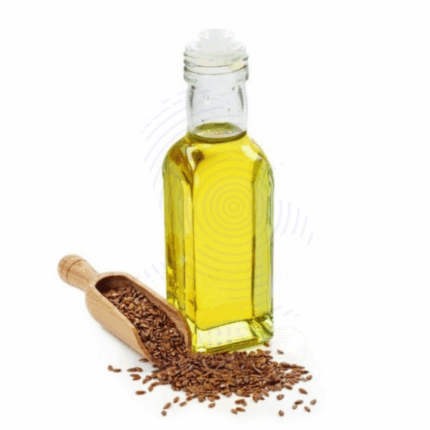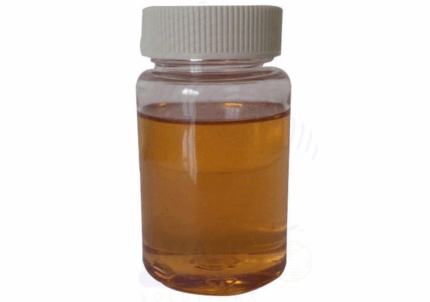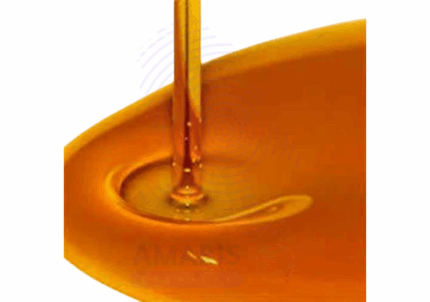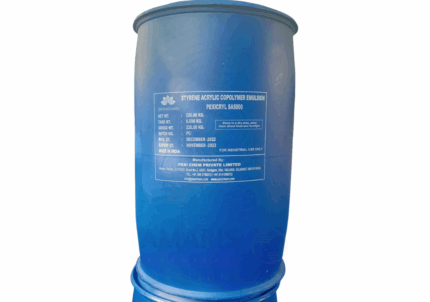Domacryl
Whatsapp Order
Domacryl is a high-performance acrylic polymer latex designed for use as a binder in water-based coatings, adhesives, sealants, and construction materials. It is a styrene-acrylic copolymer emulsion offering excellent film formation, adhesion, durability, and chemical resistance. Domacryl provides superior mechanical strength and flexibility in formulated products, making it ideal for applications requiring long-lasting protection and enhanced aesthetic qualities. The polymer is supplied as a stable aqueous dispersion with approximately 50% solids content, packed in bulk (190 kg drums) for industrial use.
Category: Binders/Resins
Tags: Acrylic Polymer, Coating Material, Construction material, Domacryl, Paint Additive, Polymer Compound
Description
Table of Contents
Toggle
Domacryl (251 50X)
Primary Uses
- Coatings & Paints
- Used as a binder in interior and exterior architectural paints, providing excellent adhesion and weather resistance.
- Enhances gloss, durability, and scrub resistance in decorative coatings.
- Forms flexible films that resist cracking and peeling over time.
- Suitable for industrial and protective coatings requiring chemical and abrasion resistance.
- Construction & Building Materials
- Functions as a binder in cementitious tile adhesives, mortars, and grouts to improve workability and adhesion.
- Used in waterproofing membranes and sealants to provide flexibility and water resistance.
- Improves bonding strength in concrete repair compounds and renders.
- Adhesives & Sealants
- Used in formulation of pressure-sensitive adhesives, wood adhesives, and laminating adhesives.
- Enhances tack, peel strength, and cohesion in adhesive formulations.
- Serves as a binder in sealants requiring flexibility and weather durability.
- Textile & Paper
- Applied as a coating binder to improve printability, surface strength, and flexibility.
- Used in textile finishing for soft hand feel and abrasion resistance.
Secondary Uses
- Packaging Industry
- Used in water-based coatings for flexible packaging materials to enhance print adhesion and durability.
- Graphic Arts
- Incorporated in ink binders and overprint varnishes for improved gloss and abrasion resistance.
- Automotive
- Utilized in specialty coatings and sealants for automotive parts requiring chemical resistance and flexibility.
KEY PRODUCT FEATURES
1. Basic Identification Attributes
- Chemical Name (IUPAC): Styrene-acrylic copolymer emulsion
- Common/Trade Name: Domacryl 251 50X
- CAS Number: Not applicable (polymeric dispersion)
- HS Code: 3906.90.90
- Molecular Formula: Variable (copolymer)
- Synonyms:
- Acrylic polymer latex
- Styrene-acrylic emulsion
- Acrylic binder
2. Physical & Chemical Properties
- Physical State: Milky white aqueous dispersion
- Solids Content: Approximately 50% by weight
- pH: 7.0–9.0 (typical)
- Viscosity: Low to medium viscosity; depends on batch and formulation
- Stability: Stable under normal storage; resistant to freezing and thawing cycles
- Film Properties: Forms clear, flexible, durable films with good adhesion
3. Safety & Hazard Attributes
- Hazard Class (GHS): Not classified as hazardous
- Toxicity: Low toxicity; safe when used as intended
- Exposure Limits: No specific occupational exposure limits established
4. Storage & Handling Attributes
- Storage Conditions: Store in cool, dry conditions above 5°C and below 40°C
- Container Type: 190 kg metal drums or bulk containers
- Shelf Life: 6–12 months if stored properly
- Handling Precautions: Avoid freezing and excessive heat; prevent contamination
5. Regulatory & Compliance Attributes
- Compliant with relevant chemical safety and environmental regulations (REACH, TSCA)
- Suitable for use in products meeting VOC regulations depending on formulation
6. Environmental & Health Impact
- Ecotoxicity: Low; readily biodegradable under aerobic conditions
- Persistence: Not persistent; breaks down in wastewater treatment
- Bioaccumulation: Not expected
- Carcinogenicity/Mutagenicity: Not classified
SAFETY HANDLING PRECAUTIONS
Safety Handling Precautions
PPE Required:
- Gloves (nitrile or latex)
- Safety goggles
- Lab coat or protective apron
Handling Guidelines:
- Avoid prolonged skin contact and eye exposure
- Use in well-ventilated areas
- Prevent contamination by dirt and other chemicals
Storage Measures:
- Keep containers tightly closed when not in use
- Avoid freezing and exposure to direct sunlight
- Store away from incompatible materials such as strong acids and bases
Hygiene Practices:
- Wash hands after handling
- Do not eat, drink, or smoke during handling
- Maintain clean work areas
First Aid Measures
- Inhalation: Move to fresh air; unlikely to be harmful under normal use; seek medical attention if irritation occurs
- Skin Contact: Wash thoroughly with soap and water; consult physician if irritation persists
- Eye Contact: Rinse immediately with plenty of water for 15 minutes; seek medical advice if irritation continues
- Ingestion: Rinse mouth; not expected to be toxic; seek medical attention if large quantities ingested
Firefighting Measures
- Fire Hazards: Non-flammable aqueous dispersion; solid polymer films are combustible
- Extinguishing Media: Use water spray, foam, dry chemical, or CO₂
- Special Precautions: Avoid inhaling combustion fumes
- Decomposition Products: Carbon monoxide, carbon dioxide, and trace hydrocarbons upon burning
Related products
Eagle Homopolymer 510/50
Eagle Homopolymer 510/50 50% is a high-purity homopolymer solution, typically referring to polyvinyl alcohol (PVA) or a similar water-soluble polymer supplied at 50% concentration. This product offers excellent film-forming, adhesive, thickening, and stabilizing properties, making it versatile in applications such as adhesives, textile sizing, paper coating, and packaging. The homopolymer’s controlled molecular weight and solution viscosity provide consistent performance and ease of handling. The 50% aqueous solution form facilitates easy mixing and incorporation into various formulations.
Eagle Styrene Acrylic 72/ 50
Eagle Styrene Acrylic 72/ 50 is a co-polymer emulsion consisting of styrene and acrylic monomers, offered at 50% active solids concentration in water. It appears as a milky-white, low-viscosity liquid with a mild odor. This polymer emulsion combines excellent film-forming properties, adhesion, and mechanical strength, making it widely used in coatings, adhesives, sealants, and functional binders across multiple industries.
Epikote 828 (Epoxy Resin)
Epikote 828 (Epoxy Resin) is a liquid bisphenol-A-based epoxy resin with a low molecular weight. It is one of the most widely used general-purpose epoxy resins in industrial applications due to its excellent mechanical, chemical, and thermal properties. Epikote 828 cures with various hardeners, especially amines, to form thermoset polymers with outstanding adhesion, chemical resistance, and dimensional stability. The resin is typically a clear to pale yellow viscous liquid and is soluble in most organic solvents. It is primarily used in coatings, adhesives, composites, electrical encapsulation, flooring systems, and structural materials.
Linseed Oil
$ 17.15
Linseed Oil, also known as flaxseed oil, is derived from the seeds of the flax plant (Linum usitatissimum). It is a pale yellow to amber oil with a mild, nutty aroma. Rich in omega-3 fatty acids and antioxidants, Linseed Oil is widely used in cosmetics, personal care, industrial applications, and traditional medicine. It is valued for its moisturizing, anti-inflammatory, and skin conditioning properties, as well as its drying qualities in paints and varnishes.
Linseed Oil Alkali Refined
Linseed Oil Alkali Refined is a vegetable oil extracted from flax seeds and then refined using alkali treatment to remove impurities, free fatty acids, and gums. This refining process enhances the oil’s stability, color, and odor, making it suitable for industrial, artistic, and manufacturing uses. It is a drying oil known for its excellent film-forming properties, quick drying time, and good adhesion to surfaces. Alkali refined linseed oil is widely used in paints, varnishes, inks, and as a raw material in chemical industries.
Long Oil
Long Oil refers to oils with a high content of unsaturated fatty acids, particularly linoleic and linolenic acids, commonly derived from drying oils such as linseed, soybean, or safflower oil. These oils have extended drying times and are used in various industrial applications where slow curing and flexible film formation are desired. Long oil is a key component in producing long oil alkyd resins, which are widely used in coatings, paints, varnishes, and printing inks due to their excellent adhesion, flexibility, and durability.
Short Oil Fast Drying (16/50) (SDA)
Short Oil Fast Drying (16/50) (SDA) Stand & Detail Alkyd (SDA) is a specially formulated alkyd resin designed for rapid drying and excellent film formation in coatings. It contains approximately 16% oil length, offering a balance between hardness and flexibility, and 50% solids content, which aids in build and coverage. This resin is widely used in industrial and decorative paints where quick drying and good adhesion are critical. Its fast curing properties make it ideal for applications requiring reduced downtime and enhanced productivity.
Styrene Acrylic Emulsion Polymer
Styrene Acrylic Emulsion Polymer is a water-based copolymer emulsion combining styrene and acrylic monomers, designed as a versatile binder with excellent film formation, adhesion, and durability. Widely used across paints, coatings, adhesives, textiles, and construction materials, this polymer offers superior weather resistance, water repellency, and flexibility. Its emulsified form enables easy incorporation into aqueous formulations, delivering enhanced performance and environmental benefits by reducing VOC emissions.


 Preservatives(food)
Preservatives(food) Flavor Enhancers
Flavor Enhancers Acidulants
Acidulants Sweeteners
Sweeteners Antioxidants
Antioxidants Colorants(food)
Colorants(food) Nutraceutical Ingredients (food)
Nutraceutical Ingredients (food) Nutrient Supplements
Nutrient Supplements Emulsifiers
Emulsifiers
 Collectors
Collectors Dust Suppressants
Dust Suppressants Explosives and Blasting Agents
Explosives and Blasting Agents Flocculants and Coagulants
Flocculants and Coagulants Frothers
Frothers Leaching Agents
Leaching Agents pH Modifiers
pH Modifiers Precious Metal Extraction Agents
Precious Metal Extraction Agents
 Antioxidants(plastic)
Antioxidants(plastic) Colorants (Pigments, Dyes)
Colorants (Pigments, Dyes) Fillers and Reinforcements
Fillers and Reinforcements Flame Retardants
Flame Retardants Monomers
Monomers Plasticizers
Plasticizers Polymerization Initiators
Polymerization Initiators Stabilizers (UV, Heat)
Stabilizers (UV, Heat)
 Antifoaming Agents
Antifoaming Agents Chelating Agents
Chelating Agents Coagulants and Flocculants
Coagulants and Flocculants Corrosion Inhibitors
Corrosion Inhibitors Disinfectants and Biocides
Disinfectants and Biocides Oxidizing Agents
Oxidizing Agents pH Adjusters
pH Adjusters Scale Inhibitors( water)
Scale Inhibitors( water)
 Antioxidants(cosmetic)
Antioxidants(cosmetic) Emollients
Emollients Fragrances and Essential Oils
Fragrances and Essential Oils Humectants
Humectants Preservatives
Preservatives Surfactants(cosmetic)
Surfactants(cosmetic) Thickeners
Thickeners UV Filters
UV Filters
 Fertilizers
Fertilizers Soil Conditioners
Soil Conditioners Plant Growth Regulators
Plant Growth Regulators Animal Feed Additives
Animal Feed Additives Biostimulants
Biostimulants Pesticides (Herbicides, Insecticides, Fungicides)
Pesticides (Herbicides, Insecticides, Fungicides)
 Active Pharmaceutical Ingredients (APIs)
Active Pharmaceutical Ingredients (APIs) Excipients
Excipients Solvents(pharmaceutical)
Solvents(pharmaceutical) Antibiotics
Antibiotics Antiseptics and Disinfectants
Antiseptics and Disinfectants Vaccine Adjuvants
Vaccine Adjuvants Nutraceutical Ingredients (pharmaceutical)
Nutraceutical Ingredients (pharmaceutical) Analgesics & Antipyretics
Analgesics & Antipyretics
 Analytical Reagents
Analytical Reagents Solvents(lab)
Solvents(lab) Chromatography Chemicals
Chromatography Chemicals Spectroscopy Reagents
Spectroscopy Reagents microbiology-and-cell-culture-reagents
microbiology-and-cell-culture-reagents Molecular Biology Reagents
Molecular Biology Reagents Biochemical Reagents
Biochemical Reagents Inorganic and Organic Standards
Inorganic and Organic Standards Laboratory Safety Chemicals
Laboratory Safety Chemicals Specialty Laboratory Chemicals(Special Laboratory Equipment)
Specialty Laboratory Chemicals(Special Laboratory Equipment)
 Demulsifiers
Demulsifiers Hydraulic Fracturing Fluids
Hydraulic Fracturing Fluids Scale Inhibitors(oil)
Scale Inhibitors(oil) Surfactants(oil)
Surfactants(oil) Drilling Fluids
Drilling Fluids
 Dyes and Pigments
Dyes and Pigments Bleaching Agents
Bleaching Agents Softening Agents
Softening Agents Finishing Agents
Finishing Agents Antistatic Agents
Antistatic Agents
 Admixtures
Admixtures Waterproofing Agents
Waterproofing Agents Sealants and Adhesives
Sealants and Adhesives Curing Compounds
Curing Compounds Concrete Repair Chemicals
Concrete Repair Chemicals Anti-Corrosion Coatings
Anti-Corrosion Coatings
 Surfactants(cleaning)
Surfactants(cleaning) Builders
Builders Enzymes
Enzymes Solvents (Cleaning)
Solvents (Cleaning) Fragrances
Fragrances
 Electronic Chemicals
Electronic Chemicals Catalysts
Catalysts Lubricants
Lubricants Photographic Chemicals
Photographic Chemicals Refrigerants
Refrigerants Automotive chemicals
Automotive chemicals Pyrotechnic Chemicals
Pyrotechnic Chemicals
 Biodegradable Surfactants
Biodegradable Surfactants Bio-based Solvents
Bio-based Solvents Renewable Polymers
Renewable Polymers Carbon Capture Chemicals
Carbon Capture Chemicals Wastewater Treatment Chemicals
Wastewater Treatment Chemicals
 Pigments
Pigments Solvents(paint)
Solvents(paint) Specialty Coatings
Specialty Coatings Binders/Resins
Binders/Resins Additives
Additives Driers
Driers Anti-Corrosion Agents
Anti-Corrosion Agents Functional Coatings
Functional Coatings Application-Specific Coatings
Application-Specific Coatings
 Fresh Herbs
Fresh Herbs Ground Spices
Ground Spices Whole Spices
Whole Spices Spice Blends
Spice Blends Dried Herbs
Dried Herbs
 Leavening Agents
Leavening Agents Dough Conditioners
Dough Conditioners Flour Treatments
Flour Treatments Fat Replacers
Fat Replacers Decoratives
Decoratives Preservatives(baking)
Preservatives(baking)
 Plasticizers & Softeners
Plasticizers & Softeners Reinforcing Agents
Reinforcing Agents Adhesion Promoters
Adhesion Promoters Vulcanizing Agents
Vulcanizing Agents Antidegradants
Antidegradants Blowing Agents
Blowing Agents Fillers & Extenders
Fillers & Extenders Accelerators & Retarders
Accelerators & Retarders